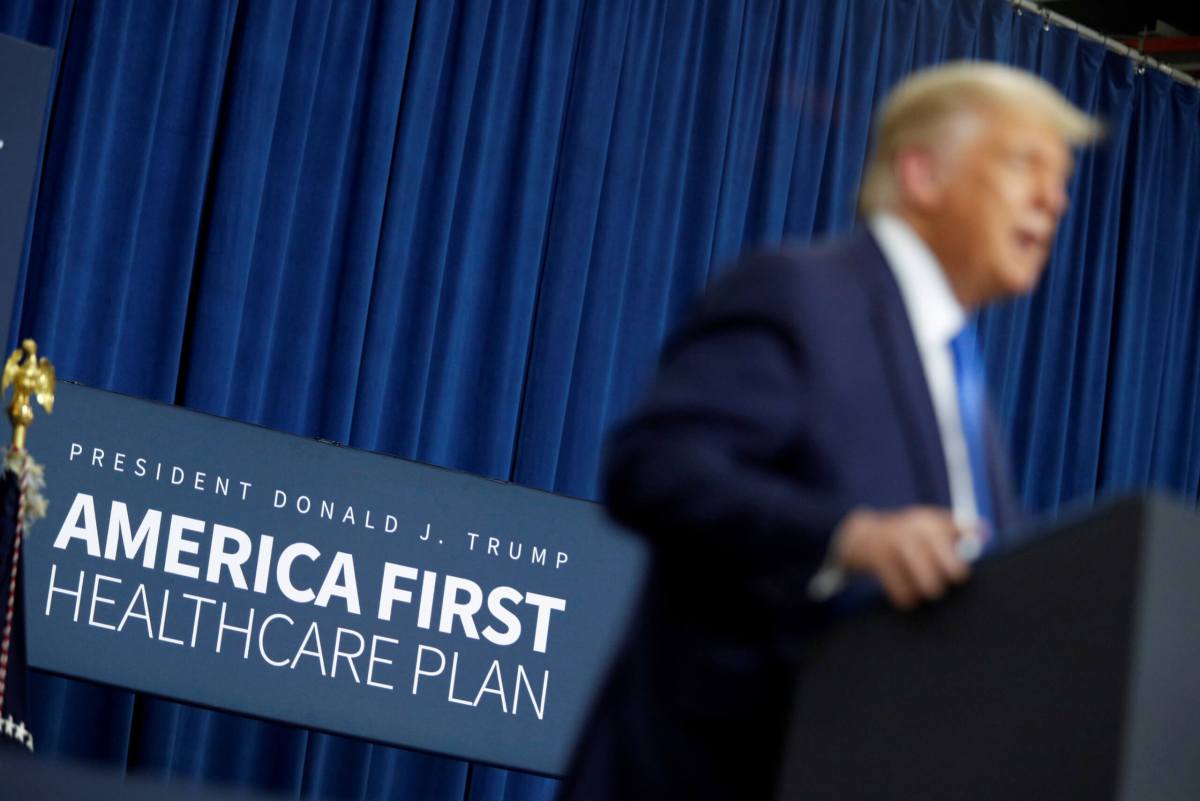By Ann Saphir, Reuters
Democratic presidential candidate Joe Biden wants to expand the Affordable Care Act, President Barack Obama’s signature healthcare legislation, and then name it after himself.
Republican President Donald Trump wants to end it altogether, and replace it with something that has yet to be defined.
An ongoing debate over which approach is better for the economy is partly about price tags. Bidencare is forecast to increase federal healthcare spending by $2 trillion or more over 10 years. Trump’s approach is to hold federal spending stable or reduce it.
Bidencare supporters emphasize the stimulative effects of government spending, especially in a period of economic distress, and the benefits of insuring more people in the middle of a pandemic. Those who prefer Trump’s approach say it would avoid debt or tax increases they say would drag on future economic growth.
The United States has about 30 million people without health insurance https://tmsnrt.rs/3mzqQxC now, down from about 46.5 million in 2010, when the ACA was passed.
Bidencare would cut that figure by a further 15 million to 20 million, an analysis by the Committee for a Responsible Federal Budget estimates. Trump isn’t expected to try to reduce that.
Healthcare spending is equal to 17% of the U.S. economy, far more than any other industrialized country, so the Trumpcare vs. Bidencare debate is no small economic matter. It’s further complicated by the fact that extra spending doesn’t translate to a healthier populace than other counties.
“Improving healthcare performance is a critical part of strengthening America’s health, economy and fiscal future, and should be top a priority for the next president and Congress,” says Peterson Foundation CEO Michael Peterson.
BIDENCARE FOCUSES ON LOWER-INCOME AMERICANS
Bidencare would cover more Americans by increasing subsidized health insurance purchases through tax credits.
It would also offer a “public option,” allowing anyone who wants it to buy in, even if their job offers private insurance. Lower-income families shut out of ACA’s expanded Medicaid eligibility because of where they live could get it premium-free.
Any boost to health and financial stability is likely to be biggest for millions of low-income households, particularly Latino and Black families who have been particularly hard-hit during the pandemic.
For these groups especially, says the University of Michigan School of Public Health’s Helen Levy, being able to accumulate assets “is really important if you think about supporting economic mobility.”
Minorities get and die from COVID-19 at higher rates than whites, data shows. Some of that is probably because Blacks and Latinos are more likely to work in jobs that put them at higher risk of transmission.
But even without COVID-19, minorities face higher rates of chronic disease and earlier death than whites. They also have lower rates of health insurance despite substantial gains since the advent of the ACA, a study by Kaiser Family Foundation shows.
Biden said he would pay for his plan through higher taxes on the wealthy, and use the clout of expanded public insurance to keep down medical costs.
Increasing the number of insured Americans could have positive economic consequences.
There’s evidence that the uninsured who do get sick get care in expensive settings like the emergency room, says UCLA public health policy professor Gerald Kominski. That takes a toll on their financial health and, when they can’t pay, strains the finances of hospitals that provide their care, with taxpayers footing part of that bill as well.
People in states where uninsured rates fell under Obamacare had fewer past-due debts, were less likely to use payday loans or file for bankruptcy, had better credit and were less likely to be evicted than those in states that did not expand Medicaid eligibility under the ACA.
“The whole reason people should get insurance, from an economist’s perspective, is to protect them against catastrophic losses,” says University of Minnesota professor Sayeh Nikpay.
TRUMPCARE LESS CLEAR, BUT CHEAPER
Trump tried and failed to get Congress to repeal the ACA in his first four-year term, and is likely to continue to it in some form during a second term.
The Supreme Court is scheduled to hear a challenge to the law a week after Tuesday’s presidential election. A ruling to dismantle the ACA would put coverage of 21 million Americans in jeopardy, according to the Urban Institute, though most legal scholars don’t expect the court to do so.
If it does, Trump hasn’t specified a plan to replace it. One blueprint may be the Health Care Choices Proposal, put together by conservative health policy experts at the Galen Institute and the Heritage Foundation.
The plan would turn money now used for the ACA over to states to help people buy private health insurance and to provide coverage for low-income households.
An analysis by the right-leaning nonprofit think tank American Action Forum found the proposal would lower premiums by 18% to 24%. The number of uninsured would remain steady.
“The macroeconomic effects would be better than either current law or proposals to devote more public resources to the ACA,” says author Doug Badger. Reducing premiums, he said, would be the “best form of economic stimulus” because it would put money in the pockets of regular Americans.
That analysis is disputed.
Bidencare’s high price tag does worry Bipartisan Policy Center Senior Vice President William Hoagland, a former staffer to Republican lawmakers. But, he said, it’s worth paying for broader health insurance access, which he said would lead to a stronger economy.
“I’m going to come down on the side that a healthy country, and a reduction in chronic conditions, improves productivity, and improving productivity increases economic growth,” he said.



































